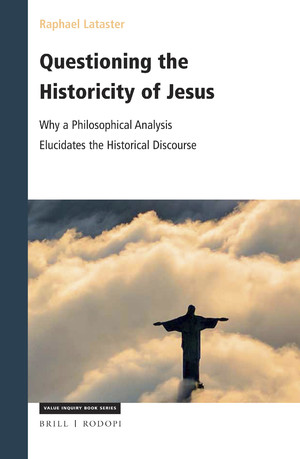 The third part of Raphael Lataster’s Questioning the Historicity of Jesus is where he presents his case for mythicism, and since his case is essentially a review of Richard Carrier’s arguments in On the Historicity of Jesus, this post is a review of a review.
The third part of Raphael Lataster’s Questioning the Historicity of Jesus is where he presents his case for mythicism, and since his case is essentially a review of Richard Carrier’s arguments in On the Historicity of Jesus, this post is a review of a review.
Lataster has is differences from Carrier and several times points to areas where he wished Carrier had approached a point differently and so forth, but in the end he concedes that all of his criticisms make no real difference to the core of Carrier’s argument:
It is surely an endorsement for Carrier’s book, that my most significant criticisms reveal an intent to raise mostly petty objections, which pose no problems whatever to his case.
(Lataster, p. 392)
Another use for Bayes – Q
One such disappointment Lataster expresses is Carrier’s failure to elaborate on the tendency of many historical Jesus scholars to rely upon “imaginary sources” such as Q. In turn, however, I would like to comment on what I think is to some extent an over-reach by Lataster with respect to “imaginary sources” at least with respect to the Q source — the hypothetical source of Jesus sayings that the authors of the gospels of Matthew and Luke are said to have shared. Quite some years ago now I was preparing to dismiss the notion of Q and look more favourably on arguments that the author of the third gospel instead knew and adapted sayings (and other) material from the first gospel, but in personal correspondence Earl Doherty convinced me that I had not investigated the arguments for the Q hypothesis diligently enough to justify setting it aside so easily. Doherty challenged me with detailed arguments I had not thought through carefully before and I soon saw that I needed to study the detailed works of John Kloppenborg and Burton Mack and others to know what it was I was “against”. It is a little unfair to dismiss Q as an “imaginary” source because it is in fact a serious hypothesis subject to various tests. What I think would be an interesting approach to the debate between the Q hypothesis and the Goodacre-Farrer hypothesis (that the author of Luke used both the Mark and Matthew has sources) would be a Bayesian analysis of the evidence for underlying each hypothesis and to see which one emerges the more probable.
But I am digressing. As both Lataster and Carrier would acknowledge, even if Q were a highly probable source for both the first and third gospels it would bring us no closer to a determination of whether Jesus originated as a historical or mythical person.
An important reminder – a fortiori
Lataster rightly emphasizes throughout his discussion of Carrier’s treatment of the various sources for Jesus that Carrier argues a fortiori, always preferencing the odds in favour of historicity wherever possible. Lataster further stresses that Carrier even counts the evidence of the Pauline epistles, the references to James the brother of the Lord, as favouring the hypothesis of historicity. Examples — of which critics of Carrier’s book should note, and which should lead readers of certain critical reviews of Carrier’s arguments to pause and reconsider the intellectual honesty of some of what they have read:
So again, though he thinks Paul’s failure to distinguish biological from fictive brothers of Jesus is evidence against historicity, he nevertheless still counts it as evidence for historicity, and thus against mythicism. . . . .
Despite thinking that the evidence from the Pauline and non-Pauline epistles is at least 16 times more likely on minimal mythicism, Carrier very charitably decides that the consequent probabilities should here favor historicity instead, effectively claiming that the Historical Jesus is 3 times more likely.209
209 Carrier (OHOJ), pp. 594–595.
(Lataster, pp. 426, 427)
On avoiding unhelpful responses
Back to “mostly petty objections”, I do find somewhat jarring certain terms like “mentally disabled” and “lying” (fortunately appearing only occasionally) when speaking of recipients and authors of visionary experiences. I would prefer consistent use of language that opened up the mental horizons of the ancients to moderns rather than introducing modern analyses that cloud a modern reader’s grasp of the historical culture. Another term, one taken over from Carrier, is the expression “cosmic sperm bank” in discussing the ancient beliefs in how God might preserve a Davidic line across and beyond human generations. Such anachronisms invite ridicule. Lataster even refers to the Zoroastrian belief that a certain lake contained the sperm of Zoroaster so that a virgin bathing in it would be impregnated and bear a messianic figure. The scholar of Second Temple Judaism owes it to readers to explain the thought-world of the ancients and avoid misleading anachronisms. Lataster attempts to smooth over the conceptual difficulties with Continue reading “Review part 9: Questioning the Historicity of Jesus / Lataster (Case for Mythicism – the Evidence)”
